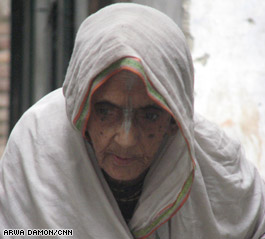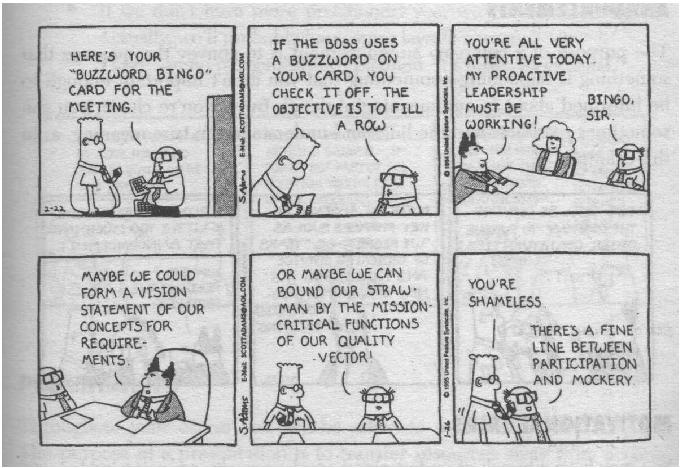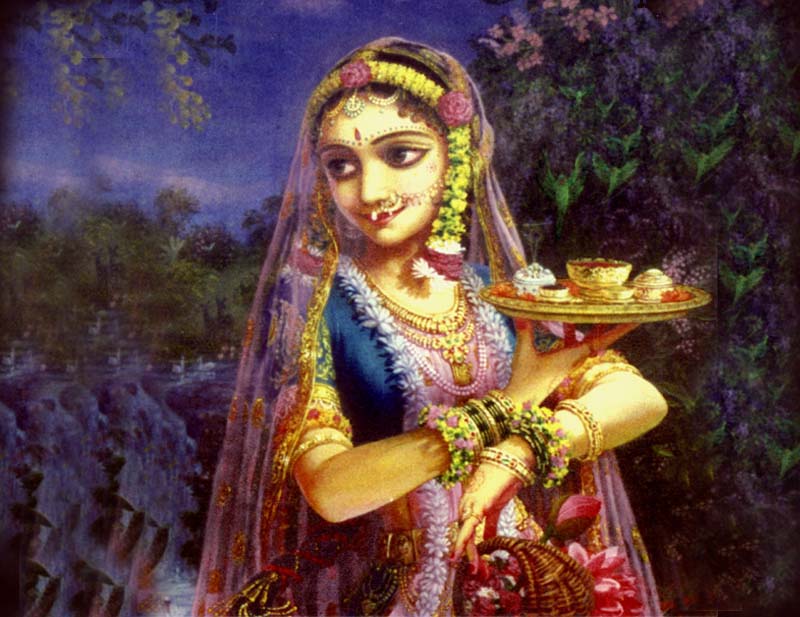I stumbled across some advice for dealing with crises of faith on Jewcy, a hipster Jewish community blog. I found it interesting for a few reasons:
- In advising Jews to not abandon their communities, the author begins with the blunt (actually, kind of rude) sentence: "Hare Krishna is not a good idea." Okay, so I'm tempted to be maha-offended, except that I try to understand it in context. First of all, the point being made (communicated cheekily, to be sure) is that in times of theological doubt don't be quick to jump ship and switch teams. Fair enough. And the fact that so many young Jews -- presumably some of whom went through theological crises beforehand -- did join ISKCON in the 1960s and 1970s makes it understandable why some Jewish people might harbor some particular mistrust toward us.
- A few paragraphs later, the author recommends that the crisis-faring Jew try yoga. Ring, ring, ring. What was that? I'm sorry I couldn't hear you, my irony alarm was ringing too loudly.
- Despite #1 and #2, it is the type of down-to-earth, simple, well-written advice that I'd like to see more of circulated within Krishna conscious circles.
Til then, I'm going to "Krishna-ize" this list. Yes, that means I will just jack the list and search replace KC terms for all of the Jewish ones. Bear with me.
(And if you'd like to see the list as it is, check it out
here.) Okay, here it goes...
For a number of reasons I’m friends with a lot of people who are constantly being tormented by crises of faith. There are smart, educated, engaged Hare Krishnas who are passionate about Krishna consciousness most days-- until they find themselves rubbing up against the edges of acceptability within their own communities. Maybe they fall in love with someone who’s not a devotee. Maybe they become frustrated by a closed-minded understanding of sastric criticism. Maybe they have had a bad experience with a senior devotee, guru, or temple president. Maybe onion rings suddenly look really appealing. Whatever the impetus, the crisis it brings on is intense and frustrating. Men and women who have devoted years of their lives to Vaishnava study and education, who are active members of a community, who regularly pray, give donations to the temple, and are involved in various devotional programs, suddenly lose motivation, and feel alienated and angry. And for a few days, or a few weeks, or months, or years, they distance themselves from everything that they once used to identify themselves. Depending on their background, their families begin to freak out. Some of their friends edge away, suddenly uncomfortable with someone they’ve known for years.

Freak. Out.: It's normal
1. Don’t abandon your community
Chances are, this crisis is a temporary thing. Though you’re feeling tormented today, by next Wednesday, or a month from now, or next year, you’ll be over it. You might not end up in exactly the same place as you have been, but just in case, it’s important to maintain a connection to your community—whether it’s a temple, a bhakti vriksha group, a group of godbrothers and sisters, or the devotees in your neighborhood. You want to keep these people around for practical reasons . They will feed and comfort you in times of crisis, and cheer you on when things are going swimmingly. Alienating them will only end up badly. If you really can’t stand to attend Sunday Feasts anymore, or you’ve decided that gurukula ruined your life and you refuse to go back for a reunion, try to do something that keeps you in the loop—even if it means you’re consciously shifting yourself into a less public or involved position. Show up just for mangala arati on a weekday. Have prasadam with old devotee friends. Keep in mind that many of your friends have gone through similar ordeals, and they’re probably willing to be pretty tolerant of whatever you need to do or not do. As long as you don’t bring the onion rings to a home program, there’s no reason you can’t maintain your position in the community.
2. Don’t join another community right away
Returning to your Jewish roots is not a good idea. :-) Having a crisis at the Sunday Feast and then leaving Monday morning to run off with the circus is probably not going to turn out well. Respect the speed of your own transition, and accept that you may need some space from any kind of theological community for awhile.
3. Don’t use this time to experiment with new substances
Replacing a Krishna habit with a crack habit is probably not going to work out well for you.
4. Consider Krishna
For some reason, most of my friends who struggle with the pulls of Krishna consciousness and modernity don’t consider their struggles to have much to do with Krishna at all. And that confuses me, because it seems like Krishna is at the center of Krishna consciousness, and if I’m having a problem with Krishna consciousness it’s because I’m having a problem with either my own or someone else’s interpretation of what Krishna wants. Think about where Krishna fits into your religious life, and think about allowing space for a God that trusts you to live your life the best way you can. Consider that you might let Krishna down without being cast to the Hellish Planets. Consider how much you care about letting Krishna down—if at all. (I don’t mean this in a pretentious way. I frequently decide that I just couldn't do whatever I think Krishna expected of me. And I’m sorry about it, but I accept it, and move on, and hope that next time I’m more up to the challenge). If you don’t believe in Krishna anymore, try and pin down why, and whether or not you still want to be around/involved with people who don’t feel the same way. Just because you have doubts, doesn't mean that you cannot stay within the shelter of a devotional community.
5. Work out
Okay, this is kind of cheesy, but I find that going to the gym makes me feel calmer and more able to deal with my problems no matter what kind of crap is going down in my religious, academic or personal life. If you’re not too intimidated or annoyed by the idea of a hatha yoga class, I highly recommend them. To find a yoga studio near you, try talking with devotees who are involved in the yoga scene -- many of them incorporate bhakti-yoga and can also provide a devotional mood.
6. State your needs
I’m big on just asking for what you want instead of beating around the bush. When your theology is falling apart, think about what you want from religion. Do you want a comforting picture of the afterlife? Do you want Vedic culture and no religion whatsoever? Do you want to chant in kirtan, but no sense of obligation to the rules and regulations? Do you want the advantages of being a member of a tight-knit community? When you can state clearly what you really want from Krishna consciousness, and what you don’t want, too, then you can start looking for ways to maintain your identity as a devotee without ignoring the problems that brought you to the edge of your faith.
7. Stop worrying about being a hypocrite
Everyone’s a hypocrite. You need to be honest and dignified with yourself, but it’s completely reasonable to say something along the lines of, “I think the Vedic standards are really important, and not something that I’m comfortable disregarding, but I’m in favor of gay rights, gay marriage, and gay pride.” Accepting that you’re going to struggle with something is a nice way of keeping your head from exploding.
8. Respect your own decisions, and everyone else’s, too
You might decide that you can’t participate in a community because of its position on women, homosexuality, social justice, how to follow ekadasi…whatever. Flaunting your new self in the faces of former friends and acquaintances is a quick and easy way to burn bridges and look like an idiot. Try to be cool with people whose journeys haven’t coincided with yours. If you need to, I recommend spewing hatred into a journal. Harmless, but highly effective.
9. Seriously, chill out
It happens to the best of us.
originally by Tamar Fox; conversion by VBD
 Yesterday afternoon, I got a call from a producer at CNN. She asked me to be a guest on a live Holiday Show, hosted by Christian speaker and journalist Roland Martin, on the subject of Christmas and the culture wars. The show is called "What Would Jesus Really Do?" and I will be part of a panel of representatives from other (i.e. - non-Christian) faith traditions.
Yesterday afternoon, I got a call from a producer at CNN. She asked me to be a guest on a live Holiday Show, hosted by Christian speaker and journalist Roland Martin, on the subject of Christmas and the culture wars. The show is called "What Would Jesus Really Do?" and I will be part of a panel of representatives from other (i.e. - non-Christian) faith traditions. I want to speak with integrity, warmth, and honesty. I want to communicate the essence of my faith's spiritual message, and do so in a way that comes from the heart as much as it does from my mouth. I want to be an instrument.
I want to speak with integrity, warmth, and honesty. I want to communicate the essence of my faith's spiritual message, and do so in a way that comes from the heart as much as it does from my mouth. I want to be an instrument.



























